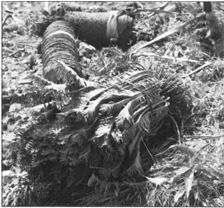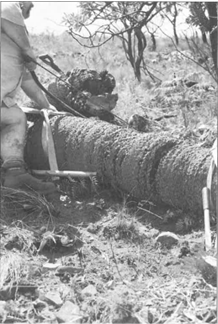Encephalartos Brevifoliolatus
- Cycad Mad
- Jul 18, 2022
- 4 min read
The debate on E. brevifoliolatus and its existence or rather its true existence is one that has come up at many informal and formal cycads discussions. It was also recently brought up on a social media platform, and for that reason I thought that it would be wise to write this article. This article is written using resources that have made a tremendous impact on my knowledge of cycads.
Background.
According to the “Journal of the Cycad Society of South Africa” no 47 dated September 1996, that cited the South African Journal of Botany 62 61—64 (1996) stated that a new distinct Encephalartos species was discovered under the name Encephalartos brevifoliolatus.
Location.
This distinct species was discovered by Mr. S.P Fourie over a widely scattered area on the Drankensberg escarpment in the Northern Province. Sadly only 5 individuals were located at that time. Short grasslands surrounded the 5 specimens on a very open Protea savanna. E. brevifoliolatus grew in full direct sunlight and were found at elevations of between 1300-1500m. More details on the location are withheld due to the vulnerability of other plant species found in the area.
Description.
The trunks of 5 E. brevifoliolatus specimens found on the escarpment were well developed, usually unbranched but often suckered at the base of the stem and in some instances formed clumps of up to 6 stems. Some of the stems were upright but often found leaning to some extent. Some specimens measured up to 2.5 meters and had a width of 250-300mm.
The leaves of the specimens were 800-900mm long, were ridged and straight or very slightly recurved near their apices. The petioles were unarmed and half cylindrical. More mature plants were hairless at their leaves showed a yellowish colour and had 90-200mm long petioles. Leaflets at the bases were slightly reduced but not to the extent of prickles.
The male cones that were found had up to 6 cones per plant. Furthermore, they were covered in very short whitish felt like hair, were about 350mm long and 60-70mm in diameter. The cone scales were 22mm wide and 5mm high.
Unfortunately, no female cones could be found and their features remain a mystery.
Why the confusion?
E. brevifoliolatus has an almost identical male cone to that of a E. laevifolius. Both have thin but rigid and spineless petioles with whitish wool when young, and relatively narrow and leaflets that are entirely ribbed on the lower surfaces. It, however, differs from E. laevifolius (or commonly known as Laevi’s) by comparing its conspicuously wider and shorter leaflets with revolute margins. E. brevifoliolatus also has a greater number of veins per pinna. Arguments were made that E. brevifoliolatus could have been a hybrid species of E. laevifolius due to their similar appearance. This assumption was shot down due to the fact that no putative plants were found growing close to the 5 specimens. Apart from not finding other specimens close enough to have caused this hybrid species to emerge or the similarity in the wider leaflets, E. brevifoliolatus shows no similarity to any plants found within the E. laevifolius group. Furthermore, the reproductive cycle of E. laevifolius is out by half a year compared to that of E. brevifoliolatus.
Conservation and the rapid decline.
Nature conservation conducted a survey in 2000. During this process, a rapid decline was observed in several cycad populations. A follow-up survey conducted in 2003 brought to the attention of officials that very few E. brevifoliolatus specimens remained in nature and that the rest have disappeared over a short period of 4 years.
Something had to be done. Thus, the difficult decision was made to move the plants for safe keeping. During the short 3 week planning phase an updated aerial survey revealed that a 4-meter stem disappeared and that another was chopped down and laying on the escarpment. The horrific photos of this senseless act as published in the cycad books of Nat Groberlaar and Douglas Goode respectively, is a reminder of to what extent greedy people will go in order to obtain the unobtainable.
The last known E. brevifoliolatus left its natural habitat on 5 February 2004. The photos as shown below is a heartbreaking reminder that the destructiveness of man causes irreparable damages. The last E. brevifoliolatus in nature had more than 200 leaves. The last flush was 100 leaves strong and less than 3 months old.
Poachers had returned to the plant prior to the return of nature conservation and had started to cut into the stem. The damage to the plant was immense and therefore the decision was made to cut the plant into 3 pieces. Taking the steep cliffs of where the plants stood into consideration, (as seen in figure 5) it is difficult to believe that the 4-meter plant was carried up the slops. It’s believed that the stolen plants were airlifted.

The pieces removed on that fateful day were airlifted and planted in a secure location. Their survival and location remain a secret.
The way forward.
It’s a fact that many hybrids exist in many private collections. Sadly, it’s also true that many enthusiastic collectors, with limited experience, have been sold plants that may have characteristics that will be found in other species.
The question therefore remains.
Do E. brevifoliolatus cycads exist? In my opinion and through my research, YES. Do all collectors that claim the have a true E. brevifoliolatus cycad have the “real deal”? Unfortunately, NO.
The future of all cycad populations is in the hands of all eager and enthusiastic collectors. The sad reality is that the same enthusiastic collectors are the reason why some species disappeared from nature. We all therefore have the responsibility to conserve with dignity.
Will that happen? Only time will tell.








Comments